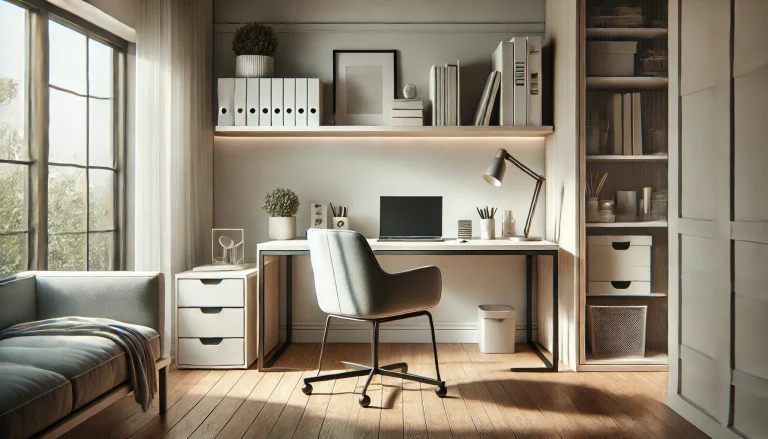

In today’s world, productivity can often feel like a constant race against time. With endless to-do lists, constant distractions, and the pressure to do more, it’s easy to become overwhelmed. Minimalism offers a way to boost productivity by helping you simplify your tasks, environment, and mindset. By focusing on what truly matters and eliminating unnecessary distractions, you can get more done with less stress.
In this article, we’ll explore how embracing minimalism can enhance your productivity, reduce overwhelm, and help you achieve your goals more efficiently.
A cluttered workspace can hinder your ability to focus and be productive. Minimalism encourages you to declutter your workspace and create an environment that supports your work and creativity.
How to simplify your workspace:
By simplifying your workspace, you create an environment that promotes clarity, focus, and productivity.
Minimalism encourages you to focus on what truly matters. The “one thing” rule suggests that you focus on completing the most important task first, rather than juggling multiple tasks at once. This helps you direct your energy toward what will have the greatest impact on your goals.
How to prioritize tasks with the “one thing” rule:
By simplifying your approach to tasks, you ensure that you’re putting your time and energy into what really matters.
Distractions are a major barrier to productivity. Minimalism encourages you to limit distractions by simplifying your environment and setting boundaries around your time.
How to limit distractions:
By eliminating distractions, you can stay focused on the task at hand and achieve more in less time.
Minimalism encourages you to simplify your processes by creating systems that streamline your tasks and make your workflow more efficient. Having clear systems in place reduces decision fatigue and helps you complete tasks faster.
How to create simple systems:
By simplifying your systems, you can work more efficiently and accomplish more with less effort.
Minimalism encourages you to set realistic, achievable goals that align with your priorities. Rather than overloading yourself with a long list of tasks, minimalism helps you focus on goals that are both attainable and meaningful.
How to set realistic goals:
By setting realistic goals, you can avoid burnout and maintain consistent progress toward your objectives.
Minimalism teaches you the importance of setting boundaries and saying no to tasks, commitments, and distractions that don’t serve your goals. Learning to say no helps you protect your time and energy for what truly matters.
How to embrace the power of “no”:
By embracing the power of no, you can protect your time and focus on what’s most important.
Minimalism encourages you to focus on producing high-quality work rather than overwhelming yourself with too many tasks. By focusing on quality over quantity, you can achieve better results with less effort.
How to focus on quality:
By focusing on quality, you can produce better work and make a greater impact in less time.
Decision fatigue can drain your mental energy and reduce your ability to be productive. Minimalism encourages you to simplify your decision-making process by reducing the number of decisions you need to make.
How to simplify decision-making:
By simplifying your decision-making, you can conserve energy for more important tasks.
Minimalism encourages you to prioritize rest as part of your productivity routine. Overworking yourself can lead to burnout and reduced effectiveness. By taking time to rest and recharge, you can maintain a higher level of productivity in the long run.
How to make time for rest:
Rest and self-care help you stay productive by ensuring you don’t burn out.
Minimalism isn’t about doing less for the sake of it — it’s about focusing on what truly matters. By simplifying your environment, tasks, and goals, you can boost your productivity and achieve more with less stress.
Remember, less is more when it comes to productivity. Embrace minimalism to get more done with greater efficiency and clarity.